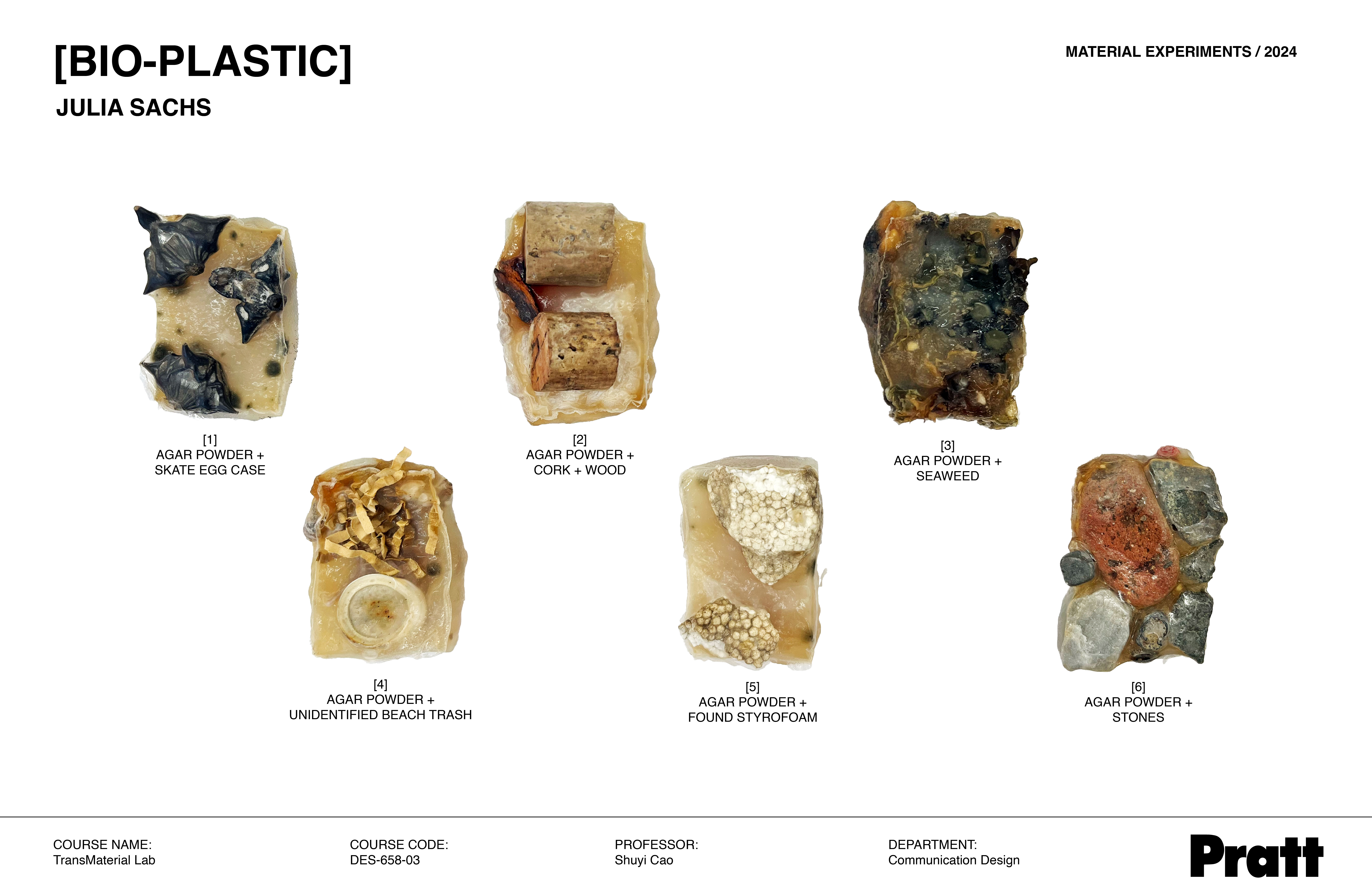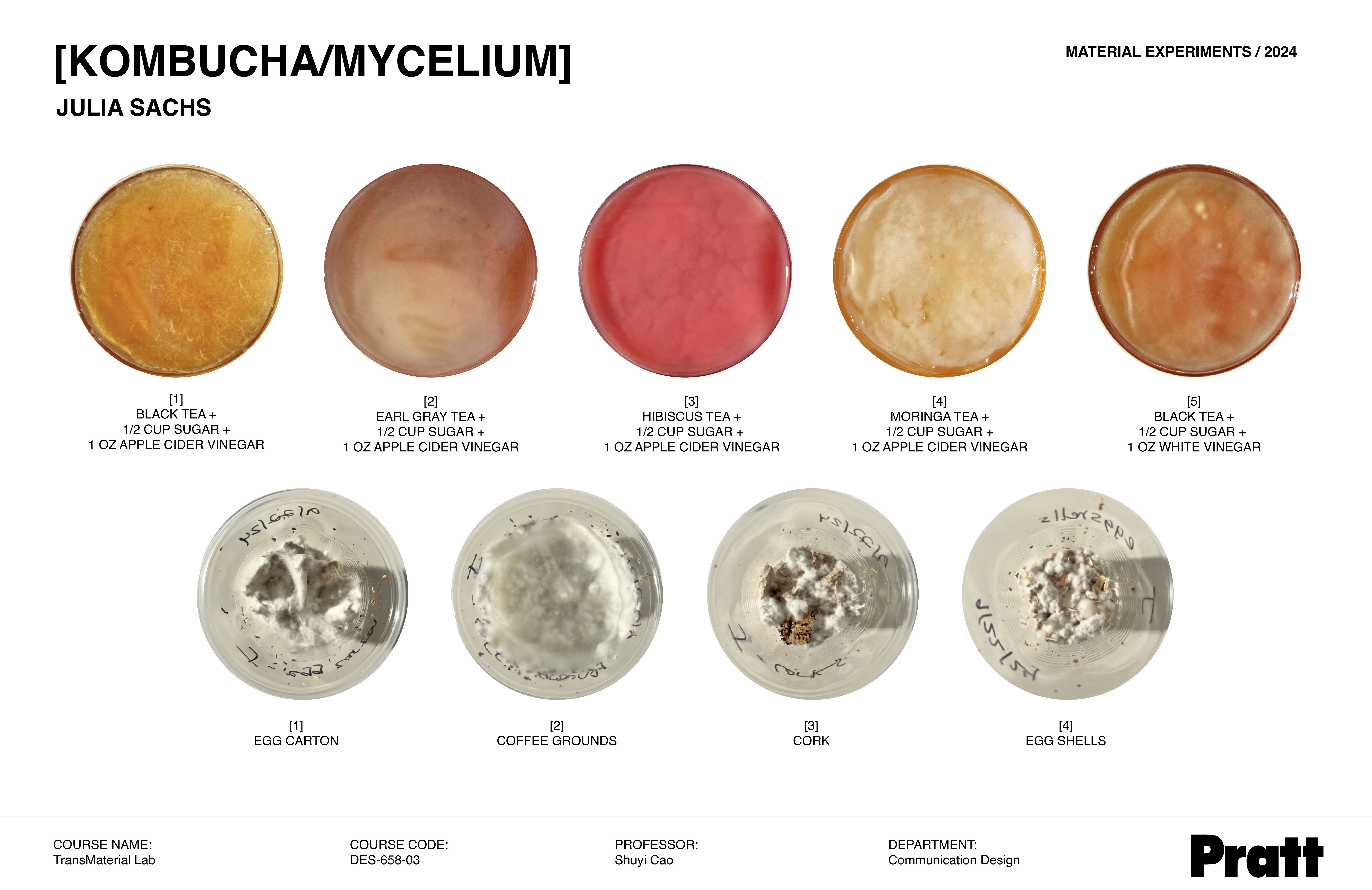
Julia Sachs
Materials: Kombucha, Mycelium
Ingredients: SCOBY, water, white vinegar, apple cider vinegar, sugar, black tea, earl gray tea, hibiscus tea, moringa tea, mycelium starter, egg carton, coffee grounds, cork, egg shells
Processes: Boil, steep, dissolve, ferment, decompose, eat
Tools: Small plastic cups, kettle, pot, aluminum foil, gloves, measuring cups and spoons
Timeline: 3 weeks
Materials: Bio-plastic
Ingredients: Agar-agar, water, collected trash and debris from Valentino Pier
Processes: Boil, stir, dissolve
Tools: Silicone mold, kettle, pot, mixing cup, measuring cups and spoons
Timeline: 1 day
Materials: Kombucha, Mycelium
Ingredients: SCOBY, water, white vinegar, apple cider vinegar, sugar, black tea, earl gray tea, hibiscus tea, moringa tea, mycelium starter, egg carton, coffee grounds, cork, egg shells
Processes: Boil, steep, dissolve, ferment, decompose, eat
Tools: Small plastic cups, kettle, pot, aluminum foil, gloves, measuring cups and spoons
Timeline: 3 weeks
Materials: Bio-plastic
Ingredients: Agar-agar, water, collected trash and debris from Valentino Pier
Processes: Boil, stir, dissolve
Tools: Silicone mold, kettle, pot, mixing cup, measuring cups and spoons
Timeline: 1 day
These experiments were conducted to test the effects of ingredient variations in kombucha and mycelium substrates on the behavior of biomaterial growth. Starting with a basic recipe for kombucha, I tested different teas in order to change SCOBY color while altering the vinegar type to see if this produced new results. Fruity teas such as moringa and hibiscus created vibrant colors with a thicker layer of growth on the surface of the kombucha sample. In addition, a range of substrates were tested with the mycelium starter. Smaller, densely packed particles of organic matter such as coffee grounds produced the fastest rates of mycelium growth from the initial starter. From this investigation, it is clear that natural ingredient substitutions have a significant impact on the physical properties of biomaterial outcomes.
